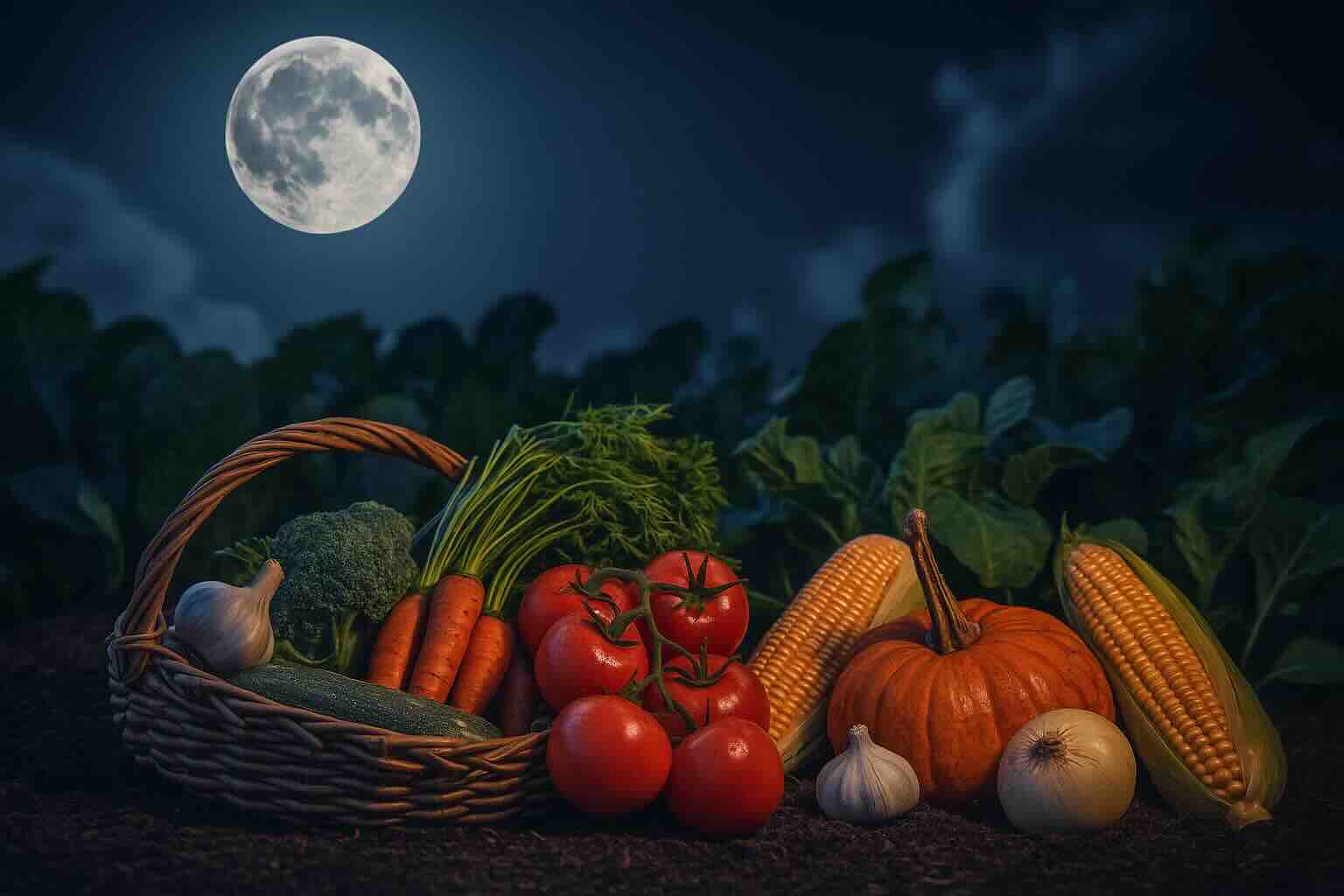The moon has guided farmers and gardeners for centuries. In 2025, more people than ever are rediscovering lunar gardening as a way to align planting with natural rhythms. Whether you believe in the moon’s direct influence or simply enjoy the structure it provides, following lunar cycles can bring focus and mindfulness to your garden. But which vegetables thrive best when planted by the moon?
Why Gardeners Look to the Moon
The idea behind lunar gardening is simple: the moon affects water on Earth, from ocean tides to soil moisture. As it waxes and wanes, gardeners time planting, watering, pruning, and harvesting to match energy flows. Even if science debates the moon’s exact influence, many gardeners report healthier plants and stronger harvests when working with lunar calendars.
In 2025, interest in eco-friendly gardening is growing, and lunar planting fits perfectly into this trend. It encourages observation of nature, slower rhythms, and deeper connection to the soil beneath our feet.
Vegetables for the Waxing Moon
The waxing moon phase—when the moon moves from new to full—is considered a time of rising energy. Gardeners see it as the perfect phase for planting vegetables that grow above ground and produce fruit.
Tomatoes: Known for needing strong starts, tomatoes benefit from planting under waxing moon energy. Expect vigorous vines and abundant fruit.
Peppers: Both hot and sweet peppers thrive when given a waxing moon start, which is believed to enhance their productivity.
Beans and peas: Legumes that grow upward respond well to the rising energy of this phase, often sprouting faster and climbing higher.
Full Moon and Fruit Vegetables
The full moon is associated with peak energy. Many gardeners choose this time to plant crops that bear fruit, as the strong lunar pull is thought to encourage flowering and fruit development.
Cucumbers: Crisp and refreshing, cucumbers are ideal full moon vegetables. Their fast growth seems to sync with lunar energy.
Squash and pumpkins: These vigorous growers are linked to fertility traditions worldwide. Planting at full moon gives them a symbolic and practical boost.
Corn: A tall and demanding crop, corn benefits from the strong growth signals of the full moon.
Root Vegetables for the Waning Moon
As the moon begins to wane—from full back to new—energy is believed to turn inward and downward. This is the phase for planting vegetables that grow beneath the soil.
Carrots: Sweet and sturdy, carrots develop stronger roots when planted during the waning moon phase.
Beets: Whether for their roots or greens, beets respond well to this cycle, producing dense, healthy bulbs.
Onions and garlic: Bulb vegetables benefit from the inward pull of waning moon energy, giving them strong foundations for long storage life.
New Moon and Soil Work
The new moon represents new beginnings. While many gardeners avoid planting seeds during this darker period, it is an excellent time for soil preparation, composting, and planning. Some root crops also benefit from being started just after the new moon, as they gain strength with the rising light.
In 2025, the new moon dates line up beautifully with spring garden preparation, making it a good time to focus on building healthy soil with organic matter and mulch.
Science and Skepticism
Not all scientists agree that the moon affects plant growth in measurable ways. Soil health, rainfall, sunlight, and temperature remain far more important factors. Still, studies suggest that plants are sensitive to light even at night, and gardeners often find that lunar planting provides rhythm and routine that benefit crops indirectly.
Think of lunar gardening not only as a possible influence but also as a way to slow down, observe, and make gardening more mindful. The results may surprise you.
Tips for Gardening by the Moon in 2025
Start by noting the lunar phases in a calendar. Use these markers to plan your garden, not as strict rules but as gentle guidance. Keep a journal of planting dates, moon phases, and crop performance. By the end of 2025, you’ll have your own data to see if lunar gardening works for you.
Pair lunar timing with practical methods like composting, mulching, and companion planting for the best results. This way, you combine tradition with modern science.
Final Thoughts: Planting with the Moon
In the end, planting vegetables by the moon in 2025 is less about superstition and more about connection. Whether the moon itself drives growth or not, aligning with its cycles can make gardening feel richer and more intentional. Tomatoes, carrots, beans, and squash may all benefit from timing, but the true gift of moon gardening is the relationship it builds between you, your garden, and the rhythms of the Earth.
So this year, try planting by the moon. You may discover that the old traditions still hold wisdom worth exploring—and your garden may thank you with a bountiful harvest.
